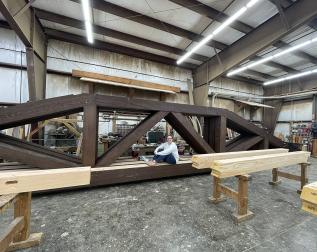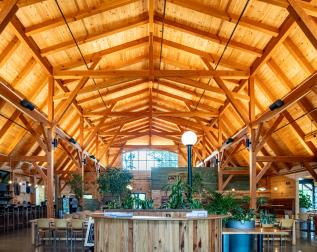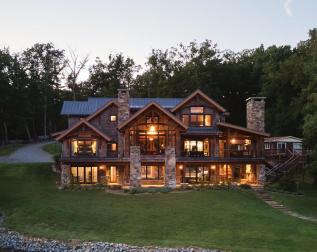School has started again and it has us thinking about recess (who doesn’t love recess?) and thereby the playscapes kids enjoy. We began asking what role wood has in these spaces which brought to the discussion a recent project at the Lilac Adventure Zone Playground. A “natural playground” in Highland Park in Rochester, NY by Barton & Loguidice, the space highlights found forms for play and modern pavilions for shelter.

There has been a surge in natural playgrounds [natural playscapes] which inherently focus on wood and the natural landscape. “Biophilic design, connecting with nature, was central to this playground project,” explained Tom Robinson, senior landscape architect, and LEED AP at Barton & Loguidice.
Biophilia. It’s a term that we’re hearing with regularity these days, and that’s exciting! From Edward Wilson’s “Biophilia” meaning ‘the rich, natural pleasure that comes from being surrounded by living organisms’. Research is conclusive that access to nature and nature-inspired spaces help reduce stress and illness. “We’re trying to recreate the experience of playing in the woods, in fields with rocks and sticks. The idea is to encourage exploration and free play with natural materials,” continued Tom.

The playground itself evolved as the natural materials arrived, trees, branches, rocks salvaged from other park project renovations. “The elements within the playground tend to change and morph as materials initially arrive, and as time passes and elements need to be removed/replaced.”

Overlooking the Cedar, Locust, and White Oak play elements are three Douglas fir timber frame shelters.

“There always needs to be space for families to gather, to keep an eye on playing children, to picnic with some shelter from sun and rain,” explained Tom. “Timber framing was a logical choice for such a natural space. They’re obviously no off-the-shelf; they’re well-crafted. We’ve included similar pavilions in other outdoor projects and they are always met with appreciation.”

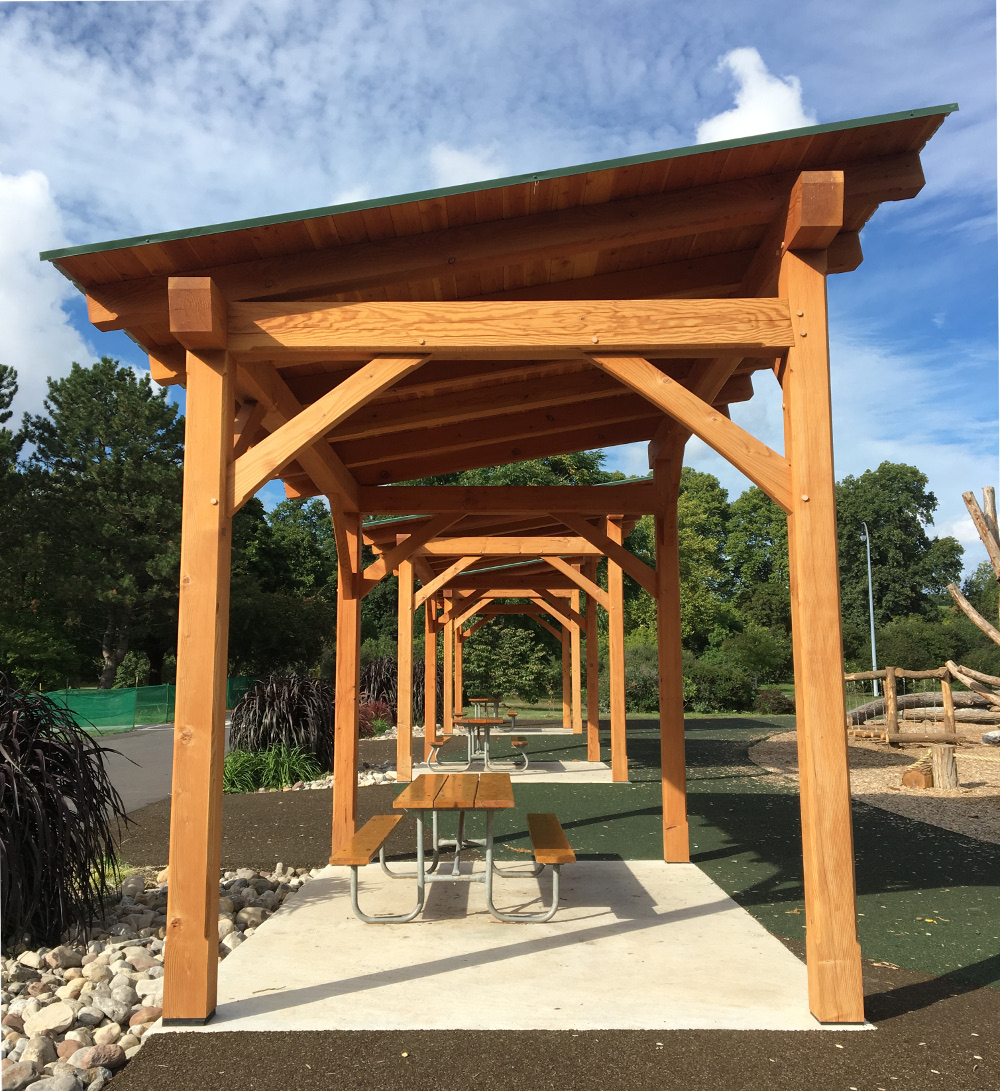
The design of the pavilions took into consideration a variety of details including timber species and finish as well as the footprint: big enough for a picnic table and some elbow room, but not too big. Height: tall enough to create open views and avoid accidental encounter with the timber braces (which run from post to beam). And aesthetics: including the juxtaposition of a modern shed roof pavilion to the found-form playground elements, chamfered edges, and a sawn curve at the bottom of the front and back carrying beams.

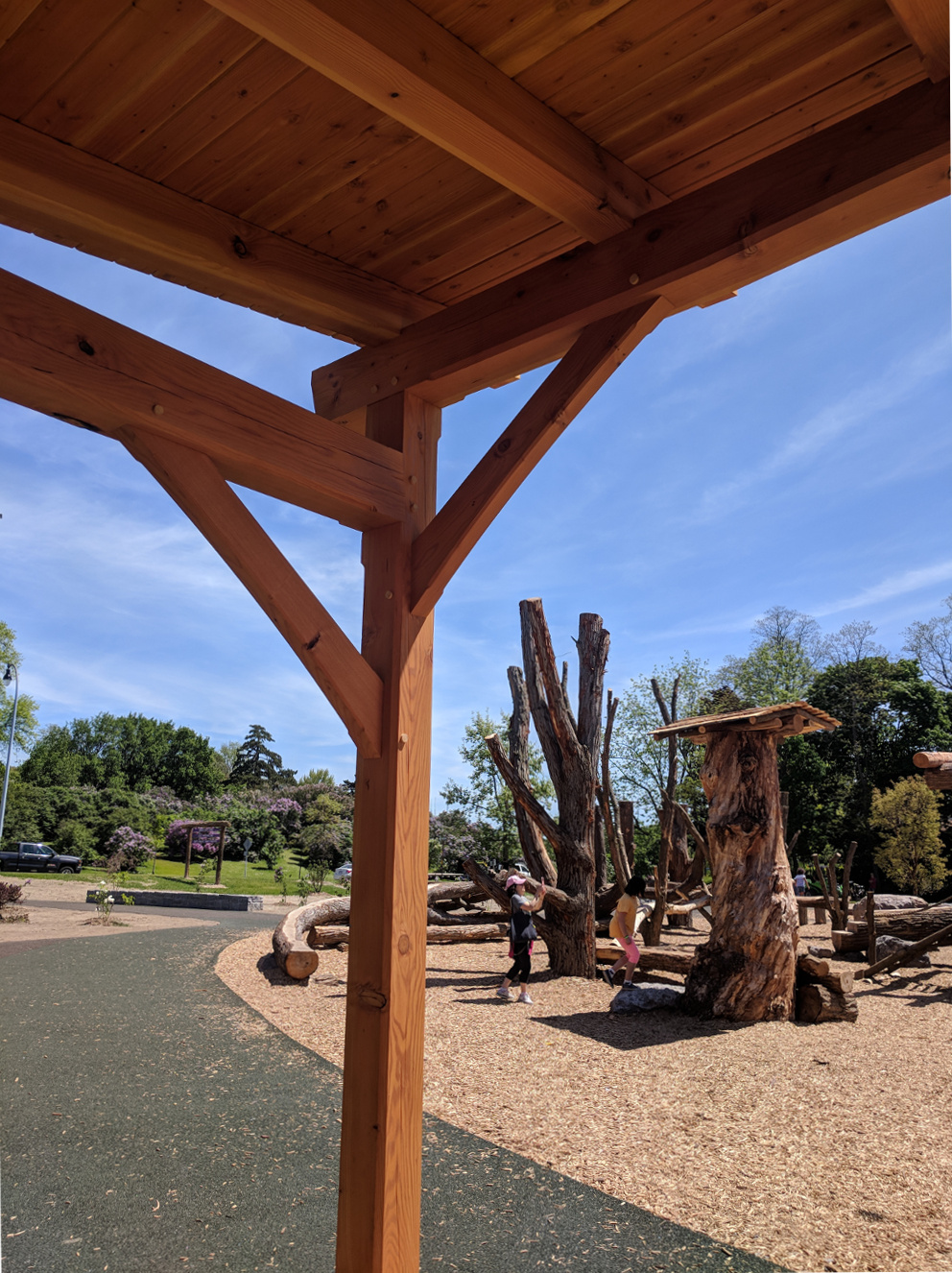
“I always like the connection of the surrounding forest, to using raw forest elements in the playground or park, to refined timbers in the pavilions. Wood gives a warmth and connects people to the environment in such a great way.”
Next up: a nature trail through the woodlands behind the playground. Plus, on nearby South Avenue, plans are developing for a children’s play pavilion at Rochester Childfirst Network.
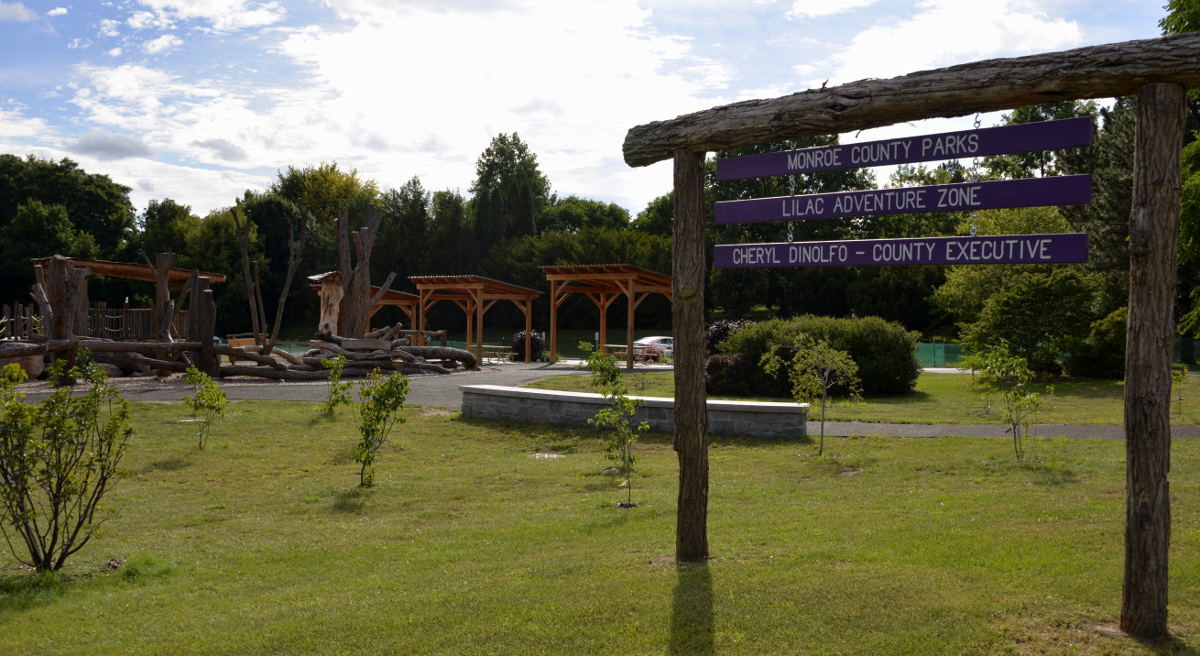
Many thanks to Tom for meeting up and for sharing his knowledge plus his enthusiasm for nature, parks, and people. Based on the laughter of children and adults alike at the playground, I’d say this type of “play” is sure to continue having a place in society. If you’d like to see more of our pavilions, our gallery offers a variety of images. Let us know if you have a timber frame project you’d like to explore.





